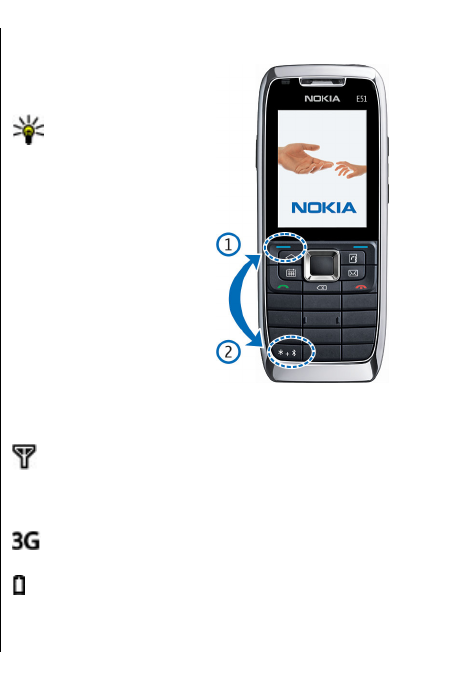
You can also contact your service provider for the
correct settings.
You can switch the device on with no SIM card inserted,
in which case the device starts up in the offline mode,
and you cannot use the network-dependent phone
functions.
To switch the device off, press and hold the power key.
Lock the keys
When the device or keypad is locked, calls may be
possible to the official emergency number
programmed into your device.
The keypad of your device locks automatically to
prevent the keys from being accidentally pressed. To
change the period after which the keypad is locked,
select Menu > Tools > Settings > General >
Security > Phone and SIM card > Keypad autolock
period.
To lock the keys manually in the standby mode, press
the left selection key and *.
To unlock the keys, press the
left selection key and *.
Tip: To lock the keys
in the menu or in an
open application,
press the power key
briefly, and select
Lock keypad. To
unlock, press the left
selection key and *.
Display indicators
The device is being used in a GSM network
(network service). The bar next to the icon indicates
the signal strength of the network at your current
location. The higher the bar, the stronger the signal.
The device is being used in a UMTS network
(network service).
The battery charge level. The higher the bar, the
stronger the charge in the battery.
17
Get started
